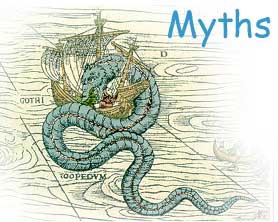

|

The northern regions have been enveloped in myths since time primeval. The classical Greeks dreamed of the Hyperboreans that lived to the north of the northern wind. They were thought to be both robust and carefree. Nietzsche, the philosopher, used the Hyperboreans as a simile for his "Übermensch".
Poets of the Romantic Age had reveries, too, of the far North. The main character of Mary Shelley's Frankenstein, for instance, dreams of the North Pole as a scene of beauty and great pleasure. Edgar Allan Poe, however, regards the northern maelstrom as a place of horror. In the pre-Enlightenment era, the northern tracts were first and foremost associated with evil. These region was the realm of Satan and, because of this, it was also the place where witches thrived markedly well. The literal entrance to Hell itself was thought to lie somewhere in Finnmark. The indigenous people of the north, the Sami, had a reputation all over Europe of being masters of witchcraft and sorcery. It was not until the late 19th-century that such myths were dispelled and replaced by the notion of the North as a region of beauty and resplendence. |

|
© University Library of Tromsø - 1999.
The Northern Lights Route is part of The Council of Europe Cultural Routes. The Cultural Routes are an invitation to Europeans to wander the paths and explore the places where the unity and diversity of our European identity were forged.
|

|